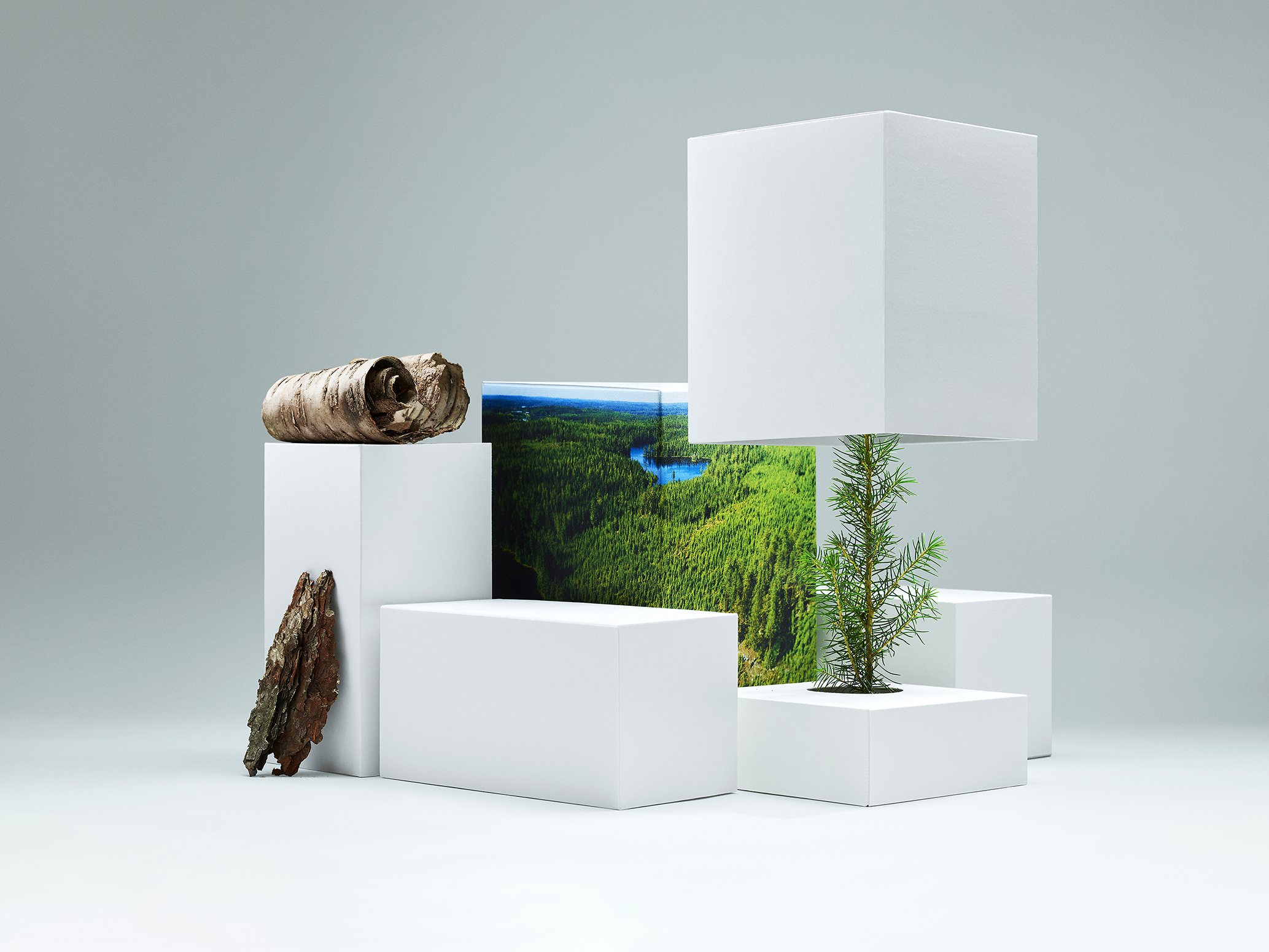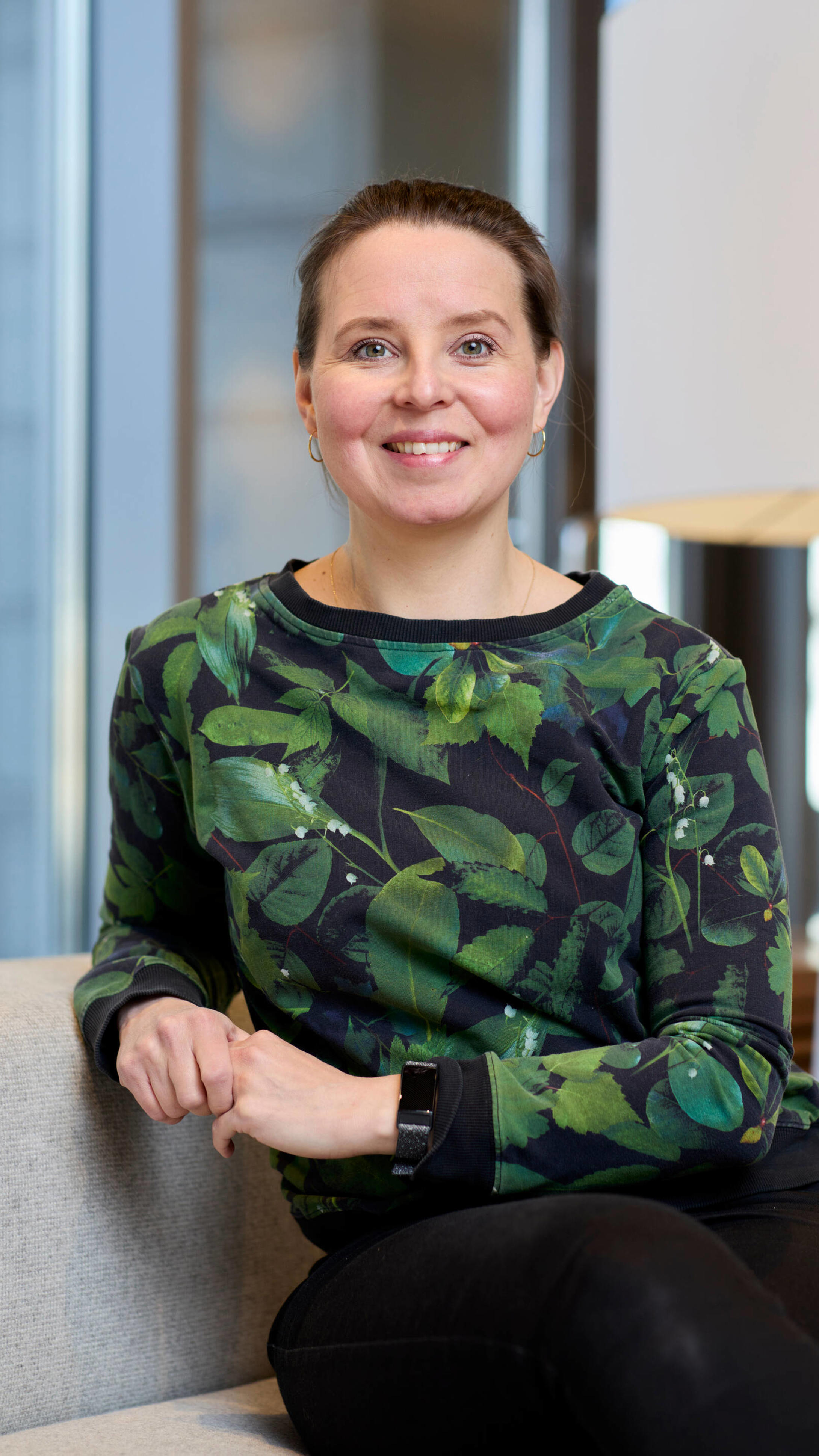We sat down with Metsä Group’s Sustainability Manager, Silja Pitkänen-Arte, to talk about regenerative forestry and the practical ways for ensuring biodiversity. Learn more about the importance of biodiversity stumps, retention trees and buffer zones, the differences between carbon sinks and carbon storages and the long history of forest management in Finland.
How do I know that the procurement of the wood raw material I use is not causing deforestation?
The foundation for forest use in Finland comes from the Finnish Forest Act, which dates back to the 1800s and states: ‘let the forests not be destroyed’.
“Thanks to the regeneration obligation and good forest management, forestry in Finland is not causing deforestation,” says Pitkänen-Arte.
Currently, about 2,500 million cubic metres of wood is growing in Finnish forests, which is an increase of over 50% compared to the situation 50 years ago.
At least four seedlings are planted for every tree removed in final felling. On average, 150 million seedlings are planted in Finland every year.
What does forest certification mean, and what does it guarantee?
Approximately 90% of Finnish commercial forests are certified with either a PEFC™ or FSC® certificate, or both. Forest certification is a system verified through external audits that give the end-user an assurance that forests have been managed in an ecologically, economically and socially sustainable manner. The degree of certified forests is high in Finland, especially given that only about 10% of the world’s forests are already certified.
“Most of the wood we use comes from certified forests. Uncertified wood also needs to meet certain minimum requirements, meaning it cannot be illegally felled or originate from a region where, for example, citizens’ rights are being violated. This ‘controlled wood’ cannot originate from forests whose use threatens high conservation values or causes deforestation. Furthermore, the wood we use can be traced all the way from the mill to the stump,” says Pitkänen-Arte.
In Finland, many of the global requirements of forest certification, such as human rights and the prohibition of child labour, are already statutory requirements.
What does biodiversity mean, and how is it considered in forestry?
Finnish forests are home to nearly 25,000 species. Different species require different features from their habitat. Even regeneration areas have a unique variety of species, while other species are adapted to life among seedlings or in old-growth forests.
“Natural biodiversity can be supported through nature management. In our commercial forest operations, we do this by leaving retention trees and dead trees, as well as making high biodiversity stumps to ensure that species dependent on decaying wood have their habitats. Retention trees are trees that are not harvested during felling, but are instead left in the forest and eventually die naturally, supporting the continuity of decaying wood in the forest. Forest certification also requires leaving decaying trees, retention trees and thickets in felling areas, as well as buffer zones along shores,” says Pitkänen-Arte.
“Metsä Group only procures spruce, pine, birch and aspen with a diameter below 40 cm and thus does not procure more rare deciduous tree species in its wood sourcing. These rare deciduous species are beneficial to serve as retention trees. Additionally, trees such as nesting trees of birds of prey, nesting hole trees, sturdy juniper, large aspen, trees with fire wounds and old retention trees are all used as retention trees,” she continues.
 With the permission of forest owners, Metsä Group has been making high biodiversity stumps in its thinning and felling operations since 2016. High biodiversity stumps are trees cut at a height of about 2–5 metres, and their idea is to produce decaying wood faster in the forest. High biodiversity stumps are now also required in the PEFC certification if the felling area does not otherwise have enough dead wood.
With the permission of forest owners, Metsä Group has been making high biodiversity stumps in its thinning and felling operations since 2016. High biodiversity stumps are trees cut at a height of about 2–5 metres, and their idea is to produce decaying wood faster in the forest. High biodiversity stumps are now also required in the PEFC certification if the felling area does not otherwise have enough dead wood.
With the permission of forest owners, Metsä Group will continue to make high biodiversity stumps, four for each hectare, to ensure that there is a wide range of decaying wood in the forest, benefiting various species such as wood decay organisms, insects and, later, cavity nesters.
According to the certification rules, only continuous-cover harvesting is allowed on buffer zones of waterbodies, and the ground surface must be kept undisturbed. The buffer zones are used to safeguard the condition of waterbodies as well as biodiversity of the species in the area.
What are a carbon sink and carbon storage, and how do they relate to forestry?
When the forest binds more carbon dioxide than it releases into the atmosphere, it is considered a carbon sink. As trees photosynthesise, carbon dioxide is stored in the wood and in the ground as carbon, creating a carbon storage.
As the forest grows older, its ability to bind carbon dioxide deteriorates, but old-growth forests are very important for carbon storage. However, as the trees die and decay, they gradually start releasing the carbon dioxide back into the atmosphere. Old-growth forests can also be vulnerable to various kinds of natural damage. To ensure the health and good growth of a forest, the forest should be managed throughout its rotation period. However, forests of all ages are needed to ensure biodiversity.


